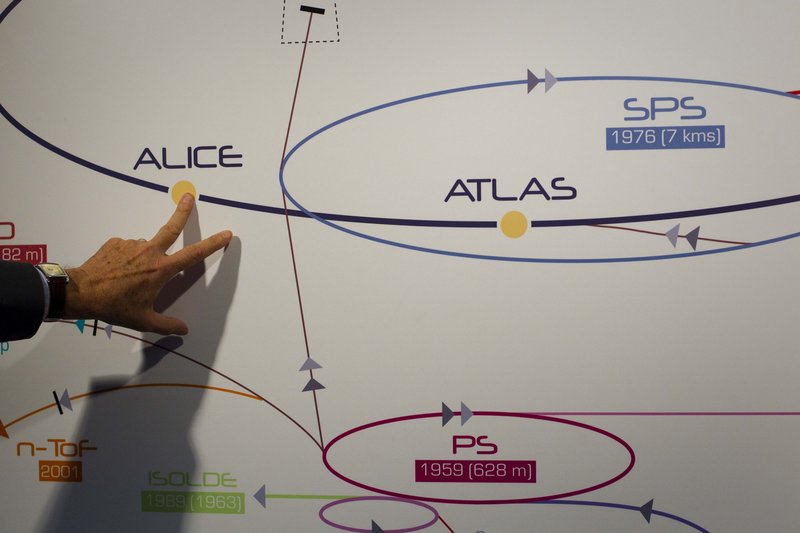GENEVA — Scientists believe the “God particle” that might explain the underpinnings of the universe is real, and they are about to present their evidence to the world.
Physicists at the world’s biggest atom smasher plan to announce Wednesday that they have nearly confirmed the primary plank of a theory that could shape the scientific understanding of all matter.
The idea is much like gravity: It was there all the time before Isaac Newton explained it. But now scientists know what it is and can put that knowledge to further use.
The focus of the excitement is the Higgs boson, a subatomic particle that, if confirmed, could help explain why matter has mass, which combines with gravity to give an object weight.
Researchers at the European Organization for Nuclear Research, or CERN, say that they have compiled vast amounts of data that show the footprint and shadow of the particle — all but proving it exists, even though it has never actually been glimpsed.
But two independent teams of physicists are cautious after decades of work and billions of dollars spent. They don’t plan to use the word “discovery.”
They say they will come as close as possible to a “eureka” announcement without uttering a pronouncement as if from the scientific mountaintop.
“I agree that any reasonable outside observer would say, ‘It looks like a discovery,’ ” said British theoretical physicist John Ellis, a professor at King’s College London who has worked at CERN since the 1970s. “We’ve discovered something which is consistent with being a Higgs.”
CERN’s atom smasher, the $10 billion Large Hadron Collider on the Swiss-French border, has been creating high-energy collisions of protons to investigate dark matter, antimatter and the creation of the universe, which many theorize occurred in a massive explosion known as the Big Bang.
The phrase “God particle,” coined by Nobel Prize-winning physicist Leon Lederman, is used by laymen, not physicists, more as an explanation for how the subatomic universe works than how it all started.
Rob Roser, who leads the search for the Higgs boson at the Fermilab in Chicago, said: “Particle physicists have a very high standard for what it takes to be a discovery,” and he thinks it is a hair’s breadth away. Roser compared the results that scientists will announce Wednesday to finding the fossilized imprint of a dinosaur: “You see the footprints and the shadow of the object, but you don’t actually see it.”
Fermilab, whose competing atom smasher reported its final results Monday after shutting down last year, said its data doesn’t settle the question of the Higgs boson, but it came tantalizingly close.
“It’s a real cliffhanger,” said Gregorio Bernardi, a physicist at the University of Paris who helped lead one of the main experiments at Fermilab. He cited “strong indications of the production and decay of Higgs bosons” in some of their observations.
Fermilab theorist Joseph Lykken said the Higgs boson “gets at the center, for some physicists, of why the universe is here in the first place.”
Copy the Story Link
Send questions/comments to the editors.



Success. Please wait for the page to reload. If the page does not reload within 5 seconds, please refresh the page.
Enter your email and password to access comments.
Hi, to comment on stories you must . This profile is in addition to your subscription and website login.
Already have a commenting profile? .
Invalid username/password.
Please check your email to confirm and complete your registration.
Only subscribers are eligible to post comments. Please subscribe or login first for digital access. Here’s why.
Use the form below to reset your password. When you've submitted your account email, we will send an email with a reset code.